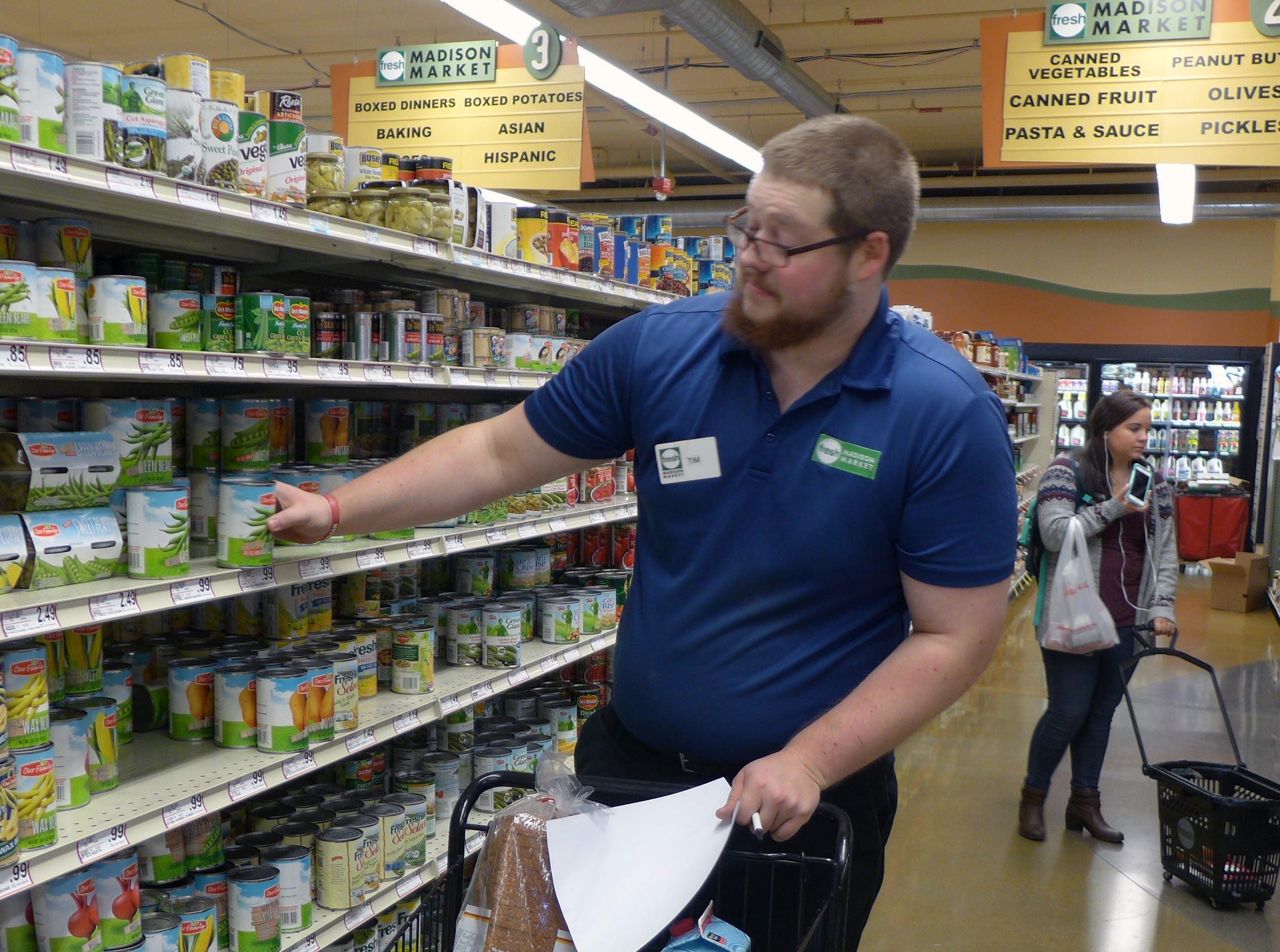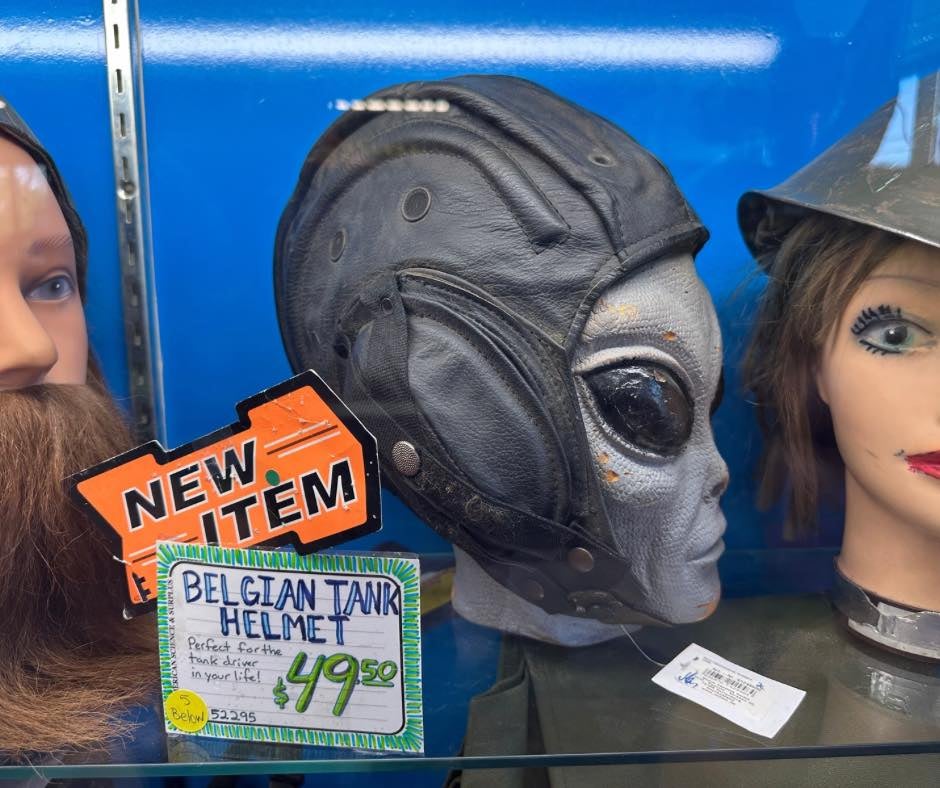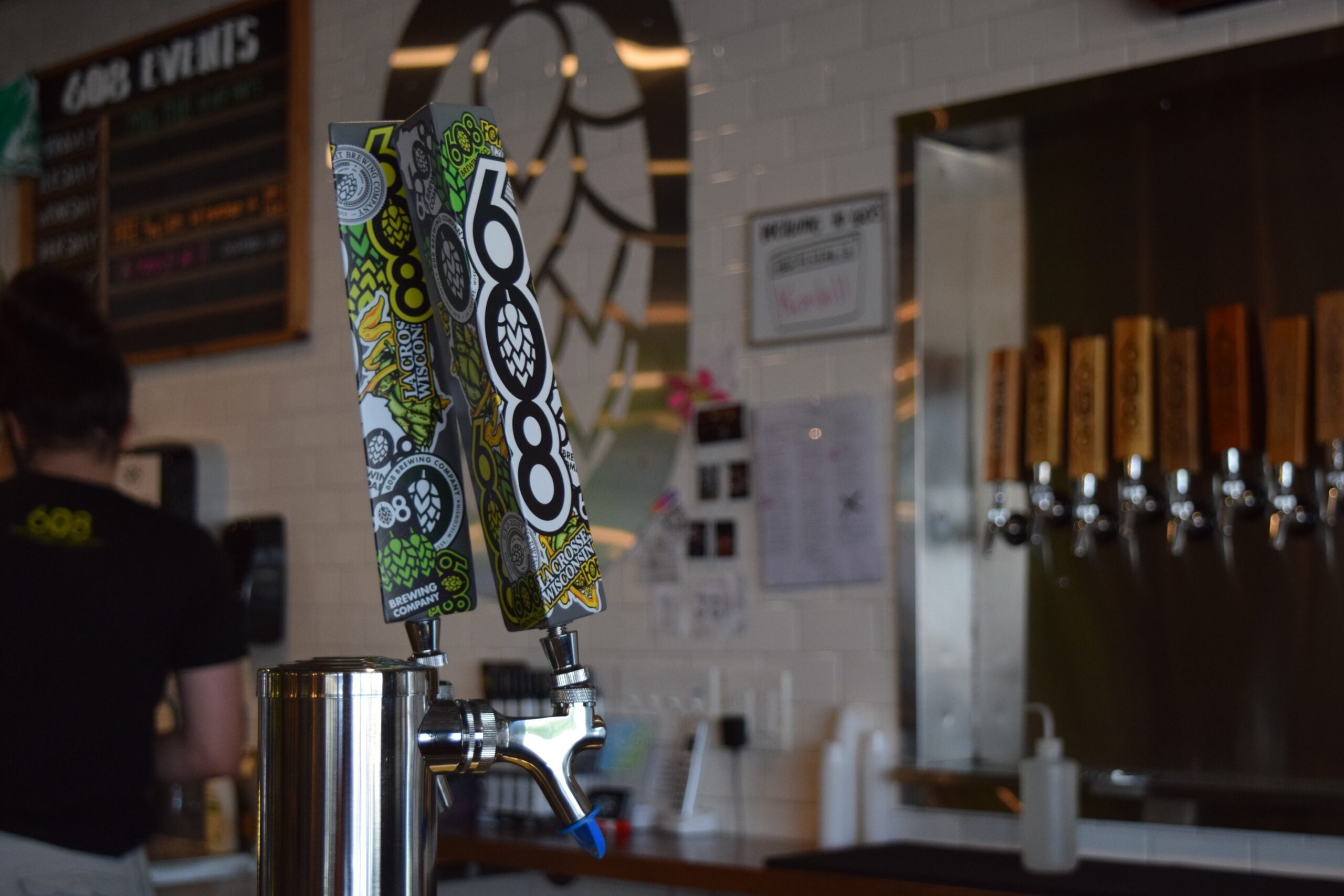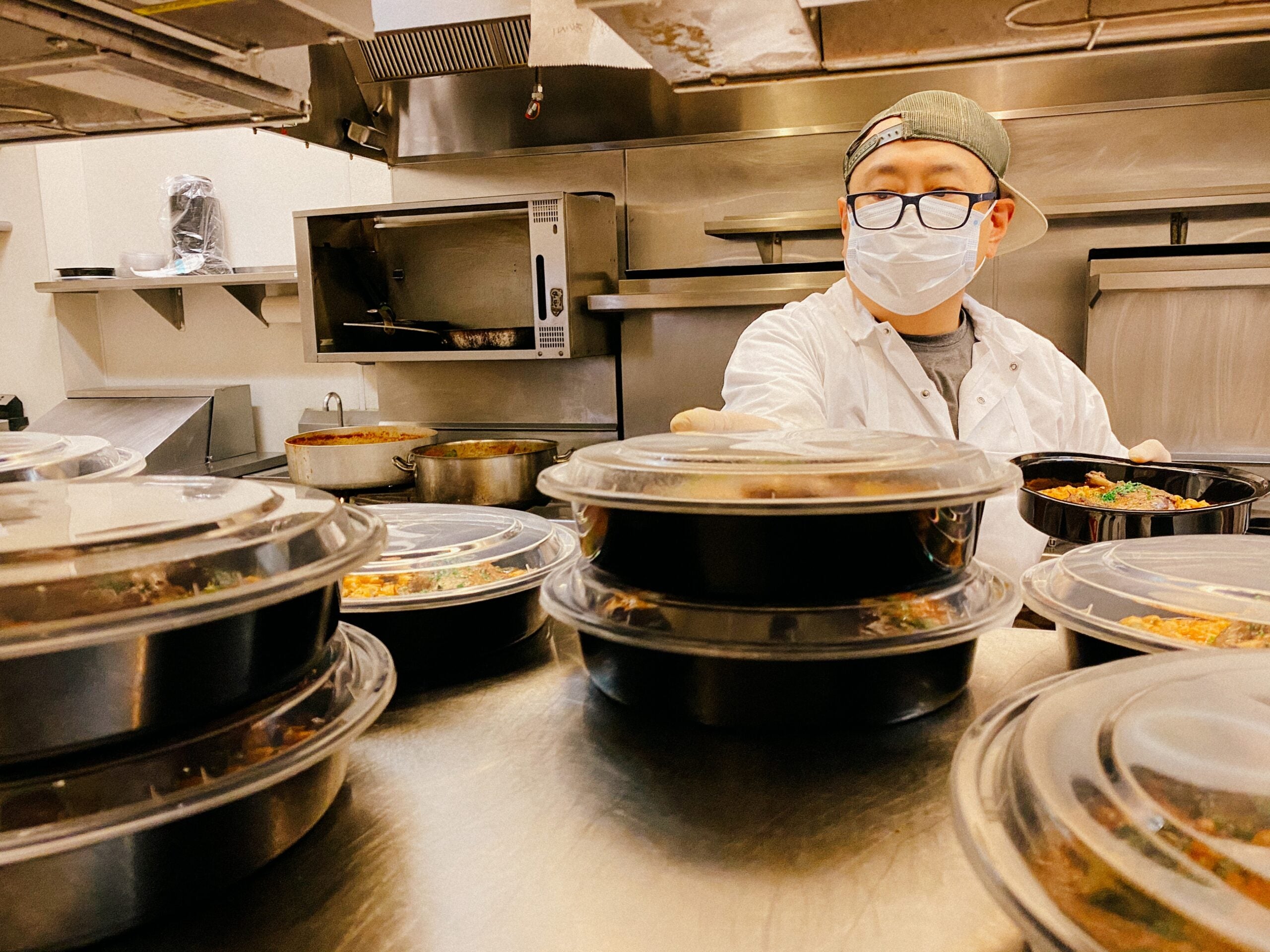Tim Preboski walks down the aisles of Fresh Madison Market, adding groceries to his cart based on the list he holds in his hand. He drops eggs into the cart — “They’re getting expensive, but still a pretty good seller,” he says — before moving on to the snack aisle to collect Gushers.
Preboski is an employee of Fresh, and on this particular day, he isn’t shopping for himself — he’s filling an order placed by an online customer. The grocery store, located near the University of Wisconsin-Madison campus, lets customers shop on its website, and then delivers the orders to them.
It’s an example of how some grocery stores have begun catering to a new kind of consumer. Going to the store with a fistful of coupons isn’t the only option anymore: With more people gaining access to broadband Internet and with fewer of them owning cars, customers are seeking food in ways that’s more convenient for them.
News with a little more humanity
WPR’s “Wisconsin Today” newsletter keeps you connected to the state you love without feeling overwhelmed. No paywall. No agenda. No corporate filter.
Yet industry officials say that by and large, grocery stores have been slow to embrace new technologies.
“Our industry is just extraordinarily traditional,” said Brandon Scholtz, president and CEO of the Wisconsin Grocers Association. “It is as about as traditional as you can get.”
From Fetch To Peapod
There are different ways digital technology has changed how some consumers shop. Take Fetch, for example: It’s a smartphone app that keeps a running tally of a shopper’s purchases and offers manufacturer coupons.
“You don’t have to clip coupons — it’s automatically done,” said Tim Philosophos, an angel investor in Fetch Rewards. “And then (it) might present opportunities. Let’s say you’re buying sausages, you’re buying brats. It might tell you buns are on sale.”
Then there’s online shopping and delivery, something that’s actually been around for a while: The Illinois-based company Peapod has been doing it since 1989.
However, there are disincentives for stores and companies to embrace online shopping. Philosophos said that while Peapod has stayed afloat, similar companies have gone bankrupt. The most notable example was a startup called Webvan, which Philosophos described as “the largest dot-com bust of all time.”
The investor acknowledged that the landscape today is very different from when Webvan crashed in 2001: “In terms of the Internet, it was like three lifetimes ago.” Nevertheless, the cautionary tale — along with the razor-thin margins that WGA president Scholtz said are associated with online shopping — may make many grocers hesitant to invest in online shopping software.
Traditional Shopping Lives On
Scholtz said he thinks that demographics may also have something to do with why the industry has been slow to embrace digital shopping tools.
“We talk a lot about millennials and what that brings to the store and how you cater to millennials, but there’s still a lot of old baby boomers out there like me who aren’t on Facebook,” he said.
Some research suggests that many consumers may be willing to buy groceries online. Philosophos points to a Nielsen study that found just that. But whether those consumers actually follow through is another matter: Many of them still go to the store the old-fashioned way.
“Sixty-one percent of these global respondents enjoy the grocery shopping experience,” said Philosophos. “So it’s not going away.”
At the same time, grocers know customer service is a way to compete beyond price and quality — and online shopping may be what keeps customers coming back. That’s why Fresh Madison Market has offered online shopping since 2010, regardless of whether traditional shoppers remain the majority.
“Everyone else in the Madison area is offering it, so to be a business and be competitive as well, you have to offer that service,” said store director Kristi Maurer.
In other words, most customers don’t use these services now — but businesses have to invest in the future, for fear that they will be left behind.
Wisconsin Public Radio, © Copyright 2025, Board of Regents of the University of Wisconsin System and Wisconsin Educational Communications Board.






